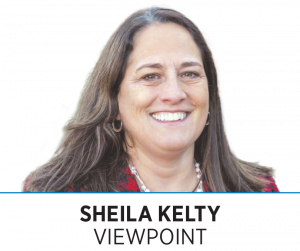Subscriber Benefit
As a subscriber you can listen to articles at work, in the car, or while you work out. Subscribe Now Growing up in Bremen, a small town of about 3,500 at the time, I witnessed firsthand the profound impact of having accessible health care. Our local hospital, serving the community since 1948, was more than just a medical facility; it was a lifeline. It connected families to the care they needed, often in critical moments.
Growing up in Bremen, a small town of about 3,500 at the time, I witnessed firsthand the profound impact of having accessible health care. Our local hospital, serving the community since 1948, was more than just a medical facility; it was a lifeline. It connected families to the care they needed, often in critical moments.
I still remember a fall day when my father suffered an acute injury while cutting wood. Thanks to our local emergency room, my mother quickly gave him the care he required, sparing him, and us, a potentially worse outcome.
In the years that followed, both of my parents received vital diagnostic care at that same hospital, facing cancer diagnoses that were caught early due to the resources available in our community. While they ultimately lost their battles with cancer, they were able to receive some of their testing and treatment close to home, which made a significant difference in their overall experience during such challenging times.
More recently, one of my siblings was diagnosed with severe diverticulitis after a visit to the local emergency room. They were admitted for an inpatient stay, and being able to receive care close to home meant friends and family could easily visit, providing comfort during a difficult time. This experience reinforced the invaluable role our local hospital plays—not just in treating illness but in supporting the emotional well-being of patients and their loved ones.
Having served as a project lead during the Community Hospital of Bremen’s replacement building project in 2006, I have a unique perspective on the challenges and triumphs involved in developing rural health care infrastructure. Following that project, I continued my journey at the hospital for four years as vice president, where I worked to ensure that our services met the needs of the community.
Many rural communities in Indiana are grappling with a health care crisis, facing closures that threaten the availability of local services. After more than 20 years in the hospital industry, I can attest that reinvesting in rural health care is critical—not just for health outcomes but for the economic vitality of these areas.
Take Batesville, for example, where employers like Hillenbrand, Batesville Casket, Baxter, Wood Mizer and Med Mizer form a robust economic ecosystem. These companies thrive in part due to the quality of life accessible health care provides. This is where initiatives like Margaret Mary Health’s bold $10 million campaign to replace its dated and underserved facility with a modern hospital facility come into play.
Recently, I attended a gala hosted by Margaret Mary Health’s foundation that raised over $1 million, demonstrating an extraordinary level of community commitment from a population of less than 10,000 people. This is not merely a financial victory; it is a statement about the importance of health care in rural economic development.
Strong health care systems attract businesses, create jobs and enhance the quality of life, positioning towns like Batesville alongside major employers in the region. When communities prioritize their hospitals, they invest in education, local businesses and the overall well-being of their residents.
Margaret Mary Health serves as a beacon for other rural communities, illustrating what is possible when a collective vision meets robust support. Rather than relying solely on a few benefactors to anchor the campaign, Batesville’s campaign brought together business owners, community foundations, philanthropists and residents from all walks of life. This collaborative approach is a model other towns should emulate.
For Indiana to thrive, we need vibrant rural communities that can offer opportunities for young people, not just in urban centers like Indianapolis or Fort Wayne but also in places like Batesville, Bremen, Madison and Greensburg. I challenge every rural community to envision what health care could be—not just for today’s patients but for the future.
Engage local leaders, educators and civic organizations. Set ambitious goals, forge partnerships and work tirelessly to achieve them.
Let us follow in the footsteps of Margaret Mary Health. Together, we can create a healthier, more vibrant future for all Hoosiers. The time for action is now.•
__________
Kelty is executive director of IMH Healthcare.
Please enable JavaScript to view this content.
